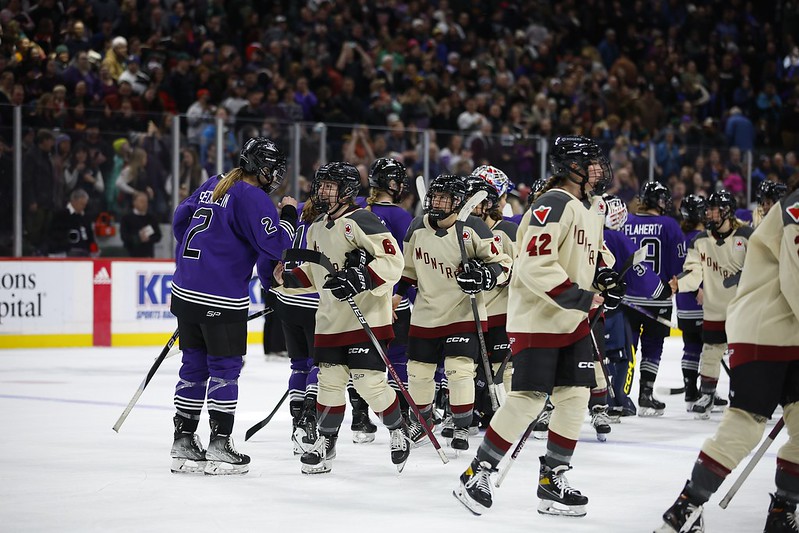In the last couple of decades, global athletic programs have faced a true reckoning, one that is increasingly bringing women’s sports to the forefront of public consciousness. Gender disparities in sports have been so glaring that they became overlooked, with men dominating in every area: On the field, in leadership positions, and in the media. But, the last couple of years, in particular, have witnessed a boom in women’s participation in sports on the national and international stage, aligning with an increasing unwillingness to conform to the inequities of the system.
One sport that has made evident strides in terms of women’s visibility, is basketball. On February 17, 2024, during the NBA All-Star Weekend, New York Liberty point guard and legendary 3-point shooter, Sabrina Ionescu, went up against arguably the best 3-point shooter of all time, Steph Curry, in a special All-Star Skills Challenge. Shooting from the NBA regulation 3-point line, Ionescu was narrowly beaten by Curry with a final score of 26 to 29, tying Damian Lillard, the winner of the regular 3-point contest. Despite her loss, Ionescu’s participation and its widely positive perception indicate a broader shift in basketball culture. The moment was hailed by players and watchers alike as a moment to reshape how people think about female basketball and competition in general, addressing harmful and sexist narratives that have pervaded the sport from the top down.
Female athletes have also aroused a fresh interest in women’s college basketball–perhaps best evidenced by the infamous rivalry between University of Iowa’s Caitlin Clark and Louisiana State University’s Angel Reese, both at the top of their respective teams. Compared by some to the legendary battle between Larry Bird and Magic Johnson in the late 1970s, Clark and Reese are currently more widely known than any men’s college basketball player in the U.S, and are inspiring young girls across the country–and the world–to dream of being a WNBA star.
Women’s increased popularity in basketball is particularly indicative of a wider shift in culture, given that the NBA performs better internationally than any other American sports league. A study of 12 countries found that the NBA ranks third highest in sports competitions behind only the Premier League and Fifa World Cup, earning $715 million annually from non-US media. Moreover, basketball tends to attract a fairly young audience, with the NBA being the most watched league by 18 to 34-year-olds globally, outside of soccer competitions. The increased attention on women’s basketball, therefore, not only reaches a broad global audience but also attracts the attention of young people who can continue to follow and support the sport for decades to come.
Another sport that has witnessed a boom in attention to women athletes is hockey. Last June, the Professional Women’s Hockey League (PWHL) was created by a group led by LA Dodgers owner Mark Walter and tennis legend Billie Jean King with six franchise locations in Toronto, Montreal, Ottawa, New York, Boston, and Minnesota. The PWHL provides an alternative route for women who want to play professional hockey, who were previously required to play in college if they wanted to continue with their sport. On Friday, February 16, 2024, a Toronto-Montreal game drew in a record-breaking crowd of 19,285, proving not only the importance of this step for female players but also the broader entertainment value of women’s sports–something that has long been contested. Furthermore, hockey academies across Canada are witnessing an uptake in interest among young girls, with applicants coming from within the country but also from the United States, Czechia, Slovakia, Mexico, and even Australia.
A phenomenon that encapsulates the growing excitement surrounding women’s sports is the increase in investment and media partnerships. The National Women’s Soccer League, for example, has become a very popular proposition for investors, following a decade of playing at the top of their field. As of midway through their 2023 season, attendance was up 48 percent and viewership was up 21 percent, sparking a series of monumental investments including a record-breaking $53 million expansion fee for Bay FC backed by multiple former players from the US Women’s National Team. The league has further investments by celebrities such as Natalie Portman and other athletes including Kevin Durant, Patrick Mahomes, Serena Williams, and Billie Jean King. Corporate sponsors and brand partners are also increasingly involved with women’s sports. Ally Financial group has been at the forefront of this, requiring that 90 percent of a one-year multimillion-dollar media buy with the Entertainment and Sports Programming Network (ESPN) be put towards women’s sports and committing to equal spending in men’s and women’s sports over the next five years. These patterns are being replicated globally, including with the inaugural Women’s Premier League (WPL) for cricket in India, whose franchise auction brought in $572 million for five teams, averaging out to more than what owners paid on average for the first eight teams in the Indian Premier League. Despite these promising trends, there is still a long way to go, especially in terms of coverage. In 2019, women’s sports still only made up 5.4 percent of TV news and highlight coverage, up only a marginal increase from 5 percent in 1989.
Despite all these changes, women and girls in sports continue to face substantial barriers, causing them to drop out of sports at alarming rates. One in three girls participate in sports from age 6 to 12, however, nearly half of them will quit during puberty. Globally, the highest rate of drop-off from girls in sports occurs between the ages of 11 to 17. This can, at least in part, be attributed to a lack of female coaches, particularly in youth sports. Nearly 75 percent of youth head coaches are men, leaving young female athletes without leaders to look up to or who may fully understand them. According to the American Women’s Sports Foundation, it is crucial that girls are supported by coaches who understand them during puberty, as they will otherwise be discouraged from competing.
Even when girls do stay in sports past their teenage years, they continue to face barriers such as the lack of consideration for women in sports science. Female athletes face distinctly different physiologic demands than men that are often neglected by healthcare providers given that the current models for everything from athletic training to injury prevention are drawing _from evidence collected on male players, then broadly applied to women. Although in 1993 the National Institute of Health began requiring scientists to include women in clinical trials, a 2014 study in the European Journal of Sport Science found that women comprised only 39% of total participants in studies published in three leading sports science journals, and fewer than 14% of studies investigated women only. Without adequate data and research, female athletes will continue to face disproportionate obstacles to remaining in sport.
Globally, there has been a push towards better gender equality in sports. The 2020 Tokyo Olympics were the most gender-balanced in history, with 49 percent of women athletes and all 206 National Olympic committees represented by at least one male and one female athlete representative. In Sep. 2023, the International Olympic Committee (IOC) renewed a partnership with UN Women that emphasized their commitment to using sports as a means to promote gender equality and the empowerment of women and girls. Unfortunately, IOC attempts at equality fall short of wholly addressing the focus, placing far too much importance on statistical representation, and ignoring concrete inequalities between men’s and women’s events. A wide range of events at the Olympics have different rules and regulations between gender-differentiated sports, including differing age restrictions (men must be 18 to compete in artistic gymnastics while women can start as early as 16), different length races, varying weight categories, and contrasting uniform requirements (men are often able to wear long or short pants while women are compelled to wear leotards, unitards, or bikini bottoms).
Addressing these issues is imperative to improving the condition of women and girls worldwide, where female sport only reflects their condition. Sport is both a crucial site of socio-cultural learning and a tool for empowerment, self-reliance, resilience, and confidence that helps improve quality of life. To facilitate the success of female athletes, international, national, and local sports organizations must take steps to address these issues from the bottom up, not only affecting structural change but also changing global perspectives.
Edited by Lilya Boumehraz

Liliana Mason is in her fourth and final year at McGill University, currently pursuing a B.A. in Political Science with a double minor in African Studies and Canadian Studies. She is particularly interested in African politics, the African diaspora, and the effects of climate change on human migration.

